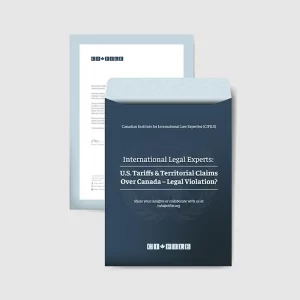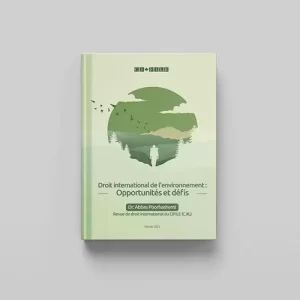A. Human Rights
1. International Covenant on Economic, Social and Cultural Rights (New York, 16 December 1966)
2. Optional Protocol to the International Covenant on Economic, Social and Cultural Rights (New York, 10 December 2008)
3. International Covenant on Civil and Political Rights (New York, 16 December 1966)
4. Optional Protocol to the International Covenant on Civil and Political Rights (New York, 16 December 1966)
5. Second Optional Protocol to the International Covenant on Civil and Political Rights, aiming at the abolition of the death penalty (New York, 15 December 1989)
6. Convention on the Elimination of All Forms of Discrimination against Women (New York, 18 December 1979)
7. Convention on the Rights of the Child (New York, 20 November 1989)
8. Optional Protocol to the Convention on the Rights of the Child on the involvement of children in armed conflict (New York, 25 May 2000)
9. Optional Protocol to the Convention on the Rights of the Child on the sale of children, child prostitution and child pornography (New York, 25 May 2000)
10. Optional Protocol to the Convention on the Rights of the Child on a communications procedure (New York, 19 December 2011)
B. Environment
11. Paris Agreement (Paris, 12 December 2015)
12. United Nations Convention to Combat Desertification in those Countries Experiencing Serious Drought and/or Desertification, Particularly in Africa (Paris, 14 October 1994)
13. Regional Agreement on Access to Information, Public Participation and Justice in Environmental Matters in Latin America and the Caribbean (Escazú, 4 March 2018)
14. Convention on the Law of the Non-Navigational Uses of International Watercourses (New York, 21 May 1997)
C. Disarmament
15. Convention on Prohibitions or Restrictions on the Use of Certain Conventional Weapons which may be deemed to be Excessively Injurious or to have Indiscriminate Effects (with Protocols I, II and III) (Geneva, 10 October 1980)
16. Additional Protocol to the Convention on Prohibitions or Restrictions on the Use of Certain Conventional Weapons which may be deemed to be Excessively Injurious or to have Indiscriminate Effects (Protocol IV, entitled Protocol on Blinding Laser Weapons) (Vienna, 13 October 1995)
17. Protocol on Prohibitions or Restrictions on the Use of Mines, Booby-Traps and Other Devices as amended on 3 May 1996 (Protocol II, as amended on 3 May 1996) annexed to the Convention on Prohibitions or Restrictions on the Use of Certain Conventional Weapons which may be deemed to be Excessively Injurious or to have Indiscriminate Effects (Geneva, 3 May 1996)
18. Amendment to Article I of the Convention on Prohibitions or Restrictions on the Use of Certain Conventional Weapons which may be deemed to be Excessively Injurious or to have Indiscriminate Effects (Geneva, 21 December 2001)
19. Protocol on Explosive Remnants of War to the Convention on Prohibitions or Restrictions on the Use of Certain Conventional Weapons which may be deemed to be Excessively Injurious or to have Indiscriminate Effects (Protocol V) (Geneva, 28 November 2003)
20. Comprehensive Nuclear-Test-Ban Treaty (New York, 10 September 1996)
21. Convention on the Prohibition of the Use, Stockpiling, Production and Transfer of AntiPersonnel Mines and on Their Destruction (Oslo, 18 September 1997)
22. Convention on Cluster Munitions (Dublin, 30 May 2008)
23. Arms Trade Treaty (New York, 2 April 2013)
24. Treaty on the Prohibition of Nuclear Weapons (New York, 7 July 2017)
D. Penal Matters
25. Protocol to Prevent, Suppress and Punish Trafficking in Persons, Especially Women and Children, supplementing the United Nations Convention against Transnational Organized Crime (New York, 15 November 2000)
26. International Convention for the Suppression of Acts of Nuclear Terrorism (New York, 13 April 2005)
E. Transportation
27. Convention on Road Traffic (Vienna, 8 November 1968)
28. Convention on Road Signs and Signals (Vienna, 8 November 1968)
29. Agreement concerning the Establishing of Global Technical Regulations for Wheeled Vehicles, Equipment and Parts which can be fitted and/or be used on Wheeled Vehicles (Geneva, 25 June 1998)
30. European Agreement concerning the International Carriage of Dangerous Goods by Road (ADR) (Geneva, 30 September 1957)
31. Convention on the Facilitation of Border Crossing Procedures for Passengers, Luggage and Load-luggage Carried in International Traffic by Rail (Geneva, 22 February 2019)
F. Commercial Arbitration and Mediation
32. United Nations Convention on International Settlement Agreements Resulting from Mediation (New York, 20 December 2018)
For more information: https://treaties.un.org/doc/source/events/2019/Treaties/treaties_english.pdf
—————————————————————————————–
International Law: International Chamber of Commerce
ICC’s world-renowned Incoterms® rules facilitate trillions of dollars in global trade each year.
What are Incoterms® rules?
The Incoterms® rules are the world’s essential terms of trade for the sale of goods. Whether you are filing a purchase order, packaging and labelling a shipment for freight transport, or preparing a certificate of origin at a port, the Incoterms® rules are there to guide you. The Incoterms® rules provide specific guidance to individuals participating in the import and export of global trade on a daily basis.
Who publishes the Incoterms® rules?
Since its founding in 1919, ICC has been committed to the facilitation of international trade. Different practices and legal interpretations between traders around the world necessitated a common set of rules and guidelines. As a response, ICC published the first Incoterms® rules in 1936. We have been maintaining and developing them ever since. As ICC celebrates its Centenary in 2019, the world business organization is pleased to announce the publication of Incoterms® 2020. The newest edition of the Incoterms® rules will help prepare business for the next century of global trade.
Where can I buy Incoterms®2020 and related products?
Incoterms® 2020 is available on ICC’s new e-commerce platform ICC Knowledge 2 to Go in both print and digital formats. The 2020 edition is available in no fewer than 29 languages — from Estonian and German to Pashto and Spanish. Check with the ICC local representative in your country for further information. More than 250 launch events and training seminars are also being organized worldwide by ICC national committees. What’s more, there is even an online course and certificate programme available from our educational arm, the ICC Academy.
Why use Incoterms® rules in international trade?
Although other clauses for global trade exist around the world, such as the Harmonised Tariff Schedule of the United States, Incoterms® rules are global in their reach. Similarly, Incoterms® rules do not include trade terms codified for national purposes, such as the “less than truckload shipping” (LTL) rule of the United States. Unlike national trade policies, Incoterms® rules are universal, providing clarity and predictability to business.
What does “Incoterms®” stand for?
“Incoterms®” is an acronym standing for international commercial terms. “Incoterms®” is a trademark of International Chamber of Commerce, registered in several countries. The Incoterms® rules feature abbreviations for terms, like FOB (“Free on Board”), DAP (“Delivered at Place”) EXW (“Ex Works”), CIP (“Carriage and Insurance Paid To”), which all have very precise meanings for the sale of goods around the world. These terms hold universal meaning for buyers and sellers around the world. If you are a financial analyst in the City of London, then you might associate the acronym “FCA” with the United Kingdom’s Financial Conduct Authority. However, for importers and exporters around the world, FCA are the initials used for “Free Carrier,” or the seller’s obligation to deliver the goods to the carrier nominated by the buyer at the seller’s premises or another named place.
When were ICC’s Incoterms® rules last updated?
ICC last updated the Incoterms® rules in 2019. While Incoterms® 2020 is the most current version of the trade terms, Incoterms® 2010 is still in effect today and can be accessed under our resources for business.
What happened to Incoterms 2015, Incoterms 2016, Incoterms, 2017, Incoterms 2018, and Incoterms 2019…?
Don’t worry, and you didn’t miss them. They don’t exist! The latest edition of the Incoterms® rules is Incoterms® 2020. However, Incoterms® 2010 remains in effect for those using them.
To learn more about the evolution of Incoterms® rules, please visit: https://iccwbo.org/resources-for-business/incoterms-rules/incoterms-2020/
————————————————————————————————-
Immigration: Government of Canada expands biometrics rules for applicants from within Canada
Canada’s biometrics collection program is expanding to include applicants applying from within Canada. This is the last expansion phase for this program.
As of December 3, 2019, individuals applying from within Canada to renew or extend their visitor visa, study permit or work permit, or those applying for temporary or permanent residence will need to give their biometrics (fingerprints and a photo) as part of their application unless otherwise exempted.
This same rule has applied to most foreign nationals applying for temporary or permanent residence from outside the country since December 31, 2018.
Service Canada will be collecting biometrics on behalf of IRCC and applicants in Canada will be able to give their biometrics at any of the 58 designated Service Canada locations across the country.
For more information, please see: https://www.cic.gc.ca/english/resources/enewsletter/index.asp
———————————————————————————————-
Immigration: IRCC launches pilot project for family reunification
IRCC has launched a new 2-year pilot project that will reunite more families. The pilot project allows some previous immigrants to sponsor undeclared immediate family members to come to Canada.
When a person applies to immigrate to Canada, they are required to declare all of their family members (spouse, common-law partner, dependent children, dependent children of dependent children). Typically, failing to declare a family member means the principal applicant will be prohibited from sponsoring that family member in the future.
The public policy, which took effect on September 9, 2019, now allows permanent residents who came to Canada as a Convention refugee, a protected person or who were themselves sponsored as a spouse, common-law partner, conjugal partner or dependent child, to sponsor family members even if they were not initially declared.
This pilot project reflects the government’s commitment to protecting vulnerable people and reuniting families. Introducing this initiative as a pilot project allows IRCC to monitor and assess the number of cases and types of situations, and to ensure that no significant issues arise.
For more information about family reunification in Canada, please see:
https://www.cic.gc.ca/english/resources/enewsletter/index.asp#pilot
———————————————————————————————





